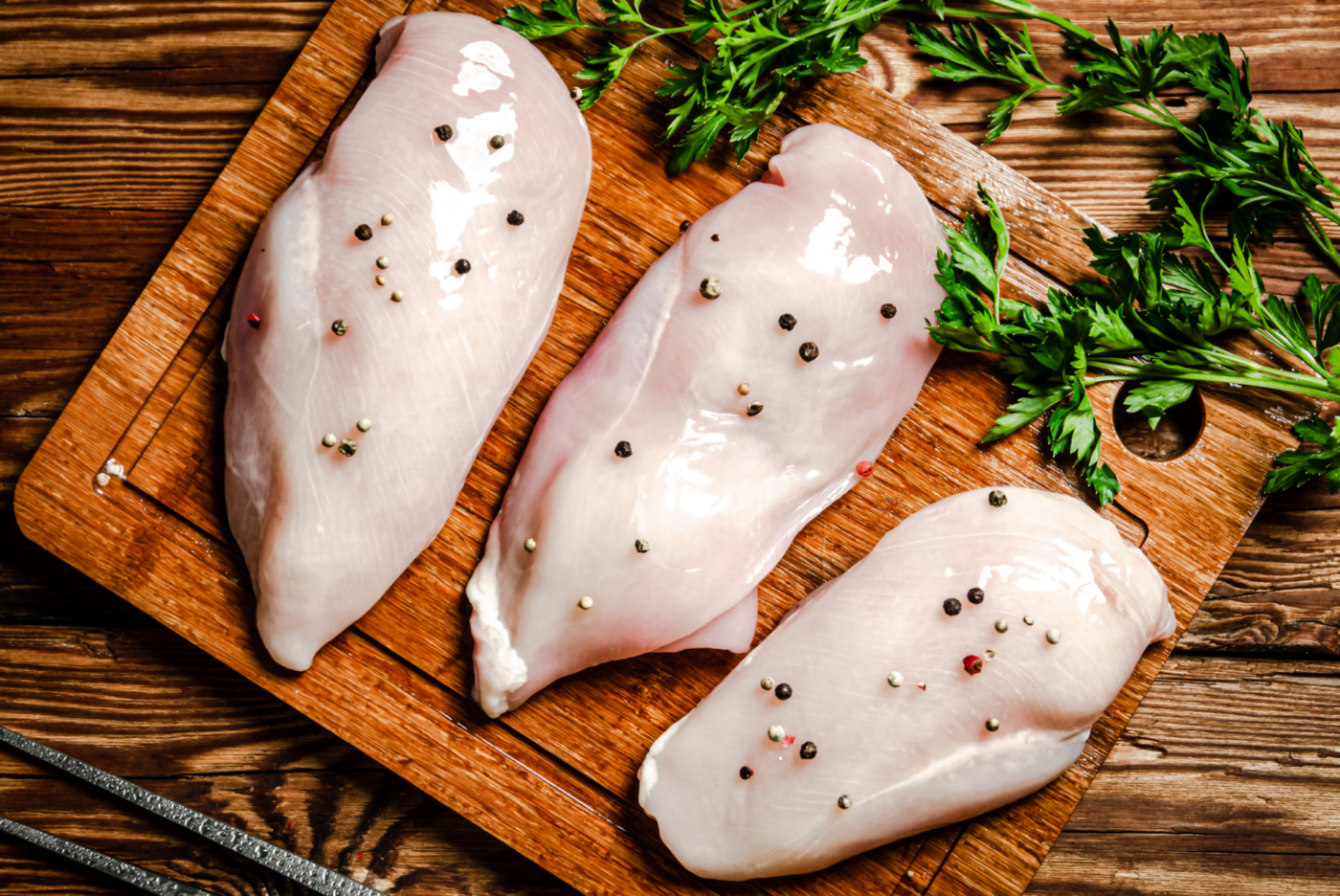Read More: Nutritional Information on Chicken Breast
Protein: The Star of the Show
Chicken breast’s claim to fame is undoubtedly its high-quality protein content. Protein is a vital macronutrient, playing a crucial role in numerous bodily functions:
- Muscle Building and Repair: Protein provides the essential amino acids necessary for building, maintaining, and repairing muscle tissue. This makes chicken breast a favorite among athletes, bodybuilders, and anyone looking to increase their protein intake.
- Satiety and Weight Management: Protein is known for its satiating effect, meaning it helps you feel full and satisfied after eating. This can be beneficial for weight management, as it may help reduce overall calorie intake.
- Enzyme and Hormone Production: Many enzymes and hormones, which regulate a vast array of bodily processes, are protein-based.
- Immune Function: Antibodies, the body’s defense mechanism against infections, are made of protein.
A Lean Protein Source
What sets chicken breast apart is its remarkably high protein-to-fat ratio. A 3.5-ounce (100-gram) serving of cooked, skinless chicken breast contains approximately 31 grams of protein while boasting only around 3.6 grams of fat. This makes it one of the leanest animal protein sources available.
Fat Content: Keeping it Lean
The minimal fat content in chicken breast is primarily composed of unsaturated fats, which are generally considered healthier than saturated fats.
- Skinless is Key: It’s important to note that the majority of the fat in chicken breast is found in the skin. Removing the skin significantly reduces the overall fat and calorie content.
- Saturated Fat: While present in small amounts, saturated fat intake should be monitored as part of a heart-healthy diet.
Calories: A Low-Calorie Option
Due to its high protein and low-fat composition, chicken breast is relatively low in calories. A 3.5-ounce (100-gram) serving of cooked, skinless chicken breast contains approximately 165 calories. This makes it an excellent choice for those watching their calorie intake or looking to maintain a healthy weight.
Micronutrients: Vitamins and Minerals for Optimal Health
Beyond its impressive macronutrient profile, chicken breast offers a valuable array of vitamins and minerals:
- Niacin (Vitamin B3): Chicken breast is an excellent source of niacin, a B vitamin that plays a vital role in:
- Energy Metabolism: Niacin helps convert food into usable energy.
- Healthy Skin and Nerves: It also supports the health of the skin and nervous system.
- Digestive Function: Niacin contributes to proper digestive function.
- Vitamin B6 (Pyridoxine): Chicken breast provides a good amount of vitamin B6, which is involved in:
- Brain Development and Function: Vitamin B6 is essential for cognitive development and function.
- Immune Function: It plays a role in supporting the immune system.
- Red Blood Cell Formation: Vitamin B6 is involved in the production of red blood cells.
- Phosphorus: Chicken breast is a good source of phosphorus, a mineral that is crucial for:
- Bone Health: Phosphorus is a major component of bones and teeth.
- Energy Production: It plays a key role in energy metabolism.
- DNA and RNA Synthesis: Phosphorus is essential for the formation of DNA and RNA, the building blocks of cells.
- Selenium: Chicken breast contains selenium, a trace mineral that acts as an antioxidant, protecting cells from damage caused by free radicals. It also supports:
- Thyroid Function: Selenium is essential for the proper functioning of the thyroid gland.
- Immune System: It contributes to a healthy immune response.
Other Micronutrients
Chicken breast also provides smaller amounts of other vitamins and minerals, including:
- Riboflavin (Vitamin B2): Important for energy metabolism and healthy skin, eyes.
- Pantothenic Acid (Vitamin B5): Involved in energy metabolism and hormone production.
- Potassium: An electrolyte that helps regulate fluid balance and muscle function.
- Zinc: Important for immune function, wound healing, and cell growth.
Cholesterol
Chicken breast, like all animal products, contains cholesterol. A 3.5-ounce (100-gram) serving of cooked, skinless chicken breast contains approximately 85 milligrams of cholesterol. While dietary cholesterol’s impact on blood cholesterol levels is less significant than previously thought, individuals with high cholesterol or heart disease may need to moderate their intake.
Making Healthy Choices
- Skinless for the Win: Opting for skinless chicken breast is the best way to minimize fat and calorie intake.
- Cooking Methods Matter: Healthy cooking methods like grilling, baking, poaching, and stir-frying with minimal added fat are preferable to deep-frying.
- Portion Control: Even with a lean protein source like chicken breast, portion control is essential for maintaining a healthy diet.
- Balance is Key: Combine chicken breast with a variety of vegetables, whole grains, and healthy fats for a well-rounded and nutritious meal.
Conclusion
Chicken breast is a nutritional powerhouse, rightfully earning its reputation as a lean protein champion. Its impressive protein content, coupled with its low fat and calorie profile, makes it an excellent choice for those seeking to build or maintain muscle, manage their weight, or simply enjoy a healthy and delicious meal. The abundance of essential vitamins and minerals, particularly niacin, vitamin B6, phosphorus, and selenium, further enhances its nutritional value. By making informed choices about preparation and portion sizes, you can fully harness the nutritional benefits of chicken breast and make it a valuable part of a balanced and flavorful diet. Whether you’re an athlete, a health enthusiast, or simply someone who appreciates good food, the chicken breast offers a delicious and nutritious way to fuel your body and support your well-being.








Comments